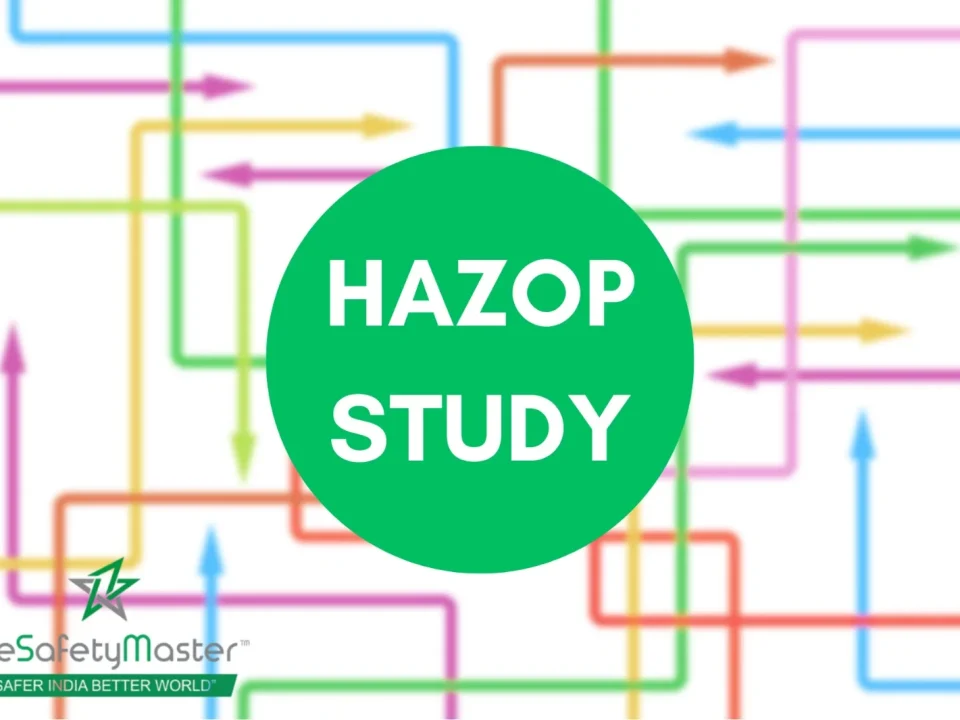HAZOP Safety Audit – The Safety Master

Electrical Safety Audit – The Safety Master
March 28, 2024
ISO45001 or ISO14001 System Implementation – The Safety Master
April 9, 2024Introduction to HAZOP Safety Audits
In industries where safety is paramount, Hazard and Operability (HAZOP) safety audits serve as a cornerstone for ensuring compliance and preventing accidents. HAZOP involves a systematic review of processes, identifying potential hazards and operability issues. These audits are vital for maintaining a safe working environment and regulatory compliance.
Understanding the HAZOP Process
The HAZOP methodology employs a structured approach to assess the safety and operability of processes. It involves a multidisciplinary team analyzing deviations from the intended operation, and considering potential causes and consequences. The primary objectives of HAZOP audits include identifying hazards, assessing risks, and recommending mitigation measures.
Common Challenges in HAZOP Safety Audits
Resource Constraints
Resource constraints pose significant challenges to conducting thorough HAZOP safety audits. These constraints can manifest in various forms, including:
Resource Constraints in HAZOP Audits
Lack of Time
In busy industrial settings, allocating sufficient time for HAZOP audits can be challenging. Competing priorities often lead to rushed or incomplete assessments, compromising the effectiveness of the audit process.
Insufficient Personnel
HAZOP audits require a diverse team with expertise in different disciplines, including process engineering, safety management, and operations. However, limited personnel availability can hinder the formation of an adequately qualified audit team.
Budgetary Constraints
Allocating financial resources for HAZOP audits, training, and necessary tools can strain organizational budgets. Limited funding may result in compromises on the quality and scope of safety audits.
Overcoming Resource Constraints
Despite these challenges, organizations can adopt strategies to overcome resource constraints and conduct comprehensive HAZOP safety audits effectively. Some effective approaches include:
Prioritizing Critical Areas
Focusing on critical processes and high-risk areas allows organizations to optimize resource utilization and allocate sufficient time and personnel to areas with the highest impact on safety.
Streamlining Processes
Implementing streamlined procedures and standardized methodologies can enhance the efficiency of HAZOP audits, reducing the time and resources required for each assessment while maintaining thoroughness.
Utilizing Technology
leveraging technological tools such as HAZOP software and digital platforms can streamline the audit process, facilitate collaboration among team members, and improve the accuracy and consistency of risk assessments.
Resistance to Change in HAZOP Audits
In addition to resource constraints, resistance to change presents another significant challenge in HAZOP safety audits. This resistance can manifest at various levels within an organization, including:
Resistance to Change in HAZOP Audits
Employee Reluctance
Employees may resist HAZOP audits due to concerns about additional workload, fear of repercussions, or lack of understanding of the audit’s purpose and benefits.
Management Resistance
Management resistance can stem from a reluctance to invest resources in safety initiatives, complacency with existing processes, or a focus on short-term financial goals at the expense of long-term safety considerations.
Cultural Barriers
Organizational cultures that prioritize productivity over safety or exhibit resistance to external scrutiny can impede the adoption of HAZOP audits and hinder efforts to improve safety performance.
Strategies to Address Resistance to Change
Effectively addressing resistance to change is crucial for successful implementation of HAZOP safety audits. Organizations can employ various strategies to overcome resistance and foster a culture of safety, including:
Effective Communication
Clear and transparent communication about the rationale, objectives, and benefits of HAZOP audits can help alleviate concerns and build buy-in from employees at all levels of the organization.
Education and Training
Providing comprehensive training programs on HAZOP methodologies, safety protocols, and risk management practices can empower employees to actively participate in the audit process and understand their role in maintaining a safe working environment.
Incentivizing Compliance
Offering incentives, rewards, or recognition for active participation in HAZOP audits and adherence to safety protocols can motivate employees and management to prioritize safety and embrace change.
Case Studies and Examples
Illustrating the effectiveness of overcoming resource constraints and resistance to change in HAZOP safety audits through real-life case studies and success stories can inspire and guide organizations in their safety improvement efforts.
Benefits of Overcoming Challenges
By overcoming resource constraints and resistance to change, organizations can realize significant benefits, including:
- Enhanced Safety Measures: Thorough HAZOP audits lead to the identification and mitigation of hazards, reducing the risk of accidents and injuries in the workplace.
- Improved Operational Efficiency: Streamlining processes and fostering a culture of safety can enhance operational efficiency, productivity, and overall business performance.
Conclusion
In conclusion, addressing common challenges such as resource constraints and resistance to change is essential for the successful implementation of HAZOP safety audits. By prioritizing critical areas, leveraging technology, and fostering a culture of safety, organizations can overcome these challenges and reap the substantial benefits of enhanced safety measures and operational efficiency.




